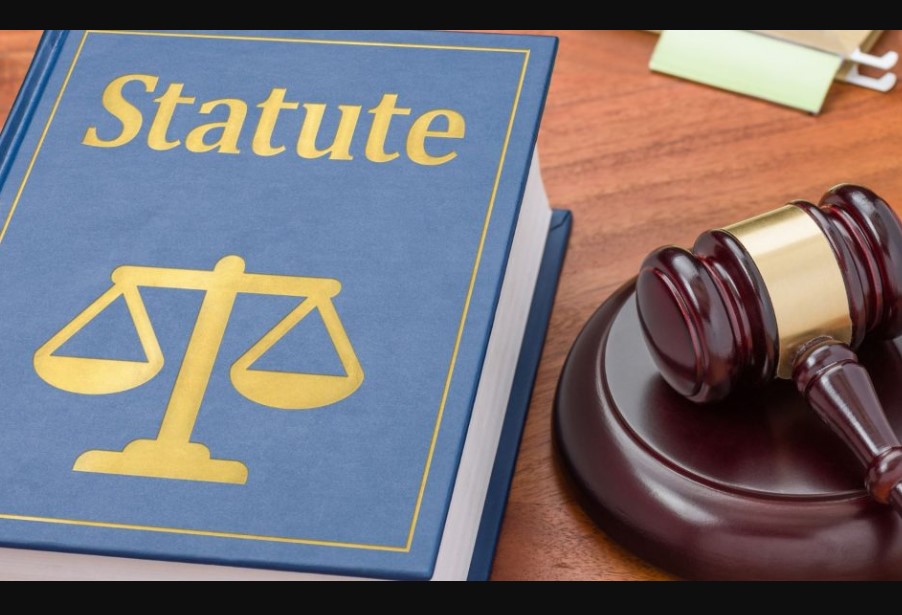
In the realm of law, a statute serves as the backbone of regulatory and legal frameworks, enabling governance, order, and justice in societies. Enacted by a legislative body, statutes are essential in providing explicit rules, obligations, and prohibitions that influence every aspect of modern life. Understanding statutes, their characteristics, classifications, and implications is essential for both legal professionals and the public to better navigate their rights and responsibilities under the law. This article explores the concept of statutes, various types of statutes, their functions, and how they operate within the legal system.
What is a Statute?
A statute is a formal written law passed by a legislative body, such as a parliament or congress, that establishes certain rules and regulations. Statutes are usually crafted through a legislative process that involves proposal, debate, revision, and approval before they become binding law. They differ from other types of legal norms, such as common law or regulations made by executive agencies, because statutes are often seen as a direct reflection of the will of the people as represented by elected lawmakers.
Statutes play a central role in the legal system as they address issues, fill legal gaps, and serve as guidelines for the application of justice. While some statutes govern broad areas of law, others address very specific issues, but all are subject to interpretation by courts if disputes arise.
Key Characteristics of Statutes
Statutes possess unique features that distinguish them from other sources of law. Here are some of their main characteristics:
- Formality: Statutes are codified, which means they are formally documented and often published in official legal texts, such as legal gazettes or government publications.
- Clarity and Precision: Statutes are designed to be clear and specific to minimize ambiguity. Legislative bodies carefully draft statutory language to avoid misinterpretation.
- Binding Nature: Once a statute is enacted, it has binding power over the people and institutions within the jurisdiction.
- Amendable: Unlike constitutional provisions, statutes can often be amended, repealed, or revised to address new issues, societal changes, or legal precedents.
These characteristics make statutes powerful tools in shaping the legal landscape, but also require careful consideration during the drafting and interpretation process.
Types of Statutes
Statutes can be categorized into several types depending on their nature, scope, and function. Below are some of the most common classifications:
Public and Private Statutes
- Public Statutes: These apply universally within a jurisdiction and impact the general public. Examples include criminal laws, environmental protection laws, and public health regulations.
- Private Statutes: Private statutes apply to specific individuals or organizations rather than the general public. These may include corporate charters or laws regarding particular land titles.
Substantive and Procedural Statutes
- Substantive Statutes: Substantive laws define rights, duties, and obligations of individuals. For example, civil rights laws and criminal statutes specify the rights of citizens and penalties for specific crimes.
- Procedural Statutes: These outline the procedures or methods by which substantive laws are applied or enforced, such as rules governing court procedures, evidence admissibility, or trial processes.
Codified and Non-Codified Statutes
- Codified Statutes: Codified laws are systematically arranged in codes or legal frameworks, making it easier to access and apply specific laws.
- Non-Codified Statutes: These may exist as separate enactments without being integrated into a comprehensive code.
How Statutes Are Created: The Legislative Process
The creation of statutes is typically a multi-step process involving a legislative body. While the specific steps vary from one jurisdiction to another, the general stages include:
- Proposal: A bill, which is a draft of a proposed law, is introduced by a member of the legislative body or sometimes by a government minister.
- Committee Review: The bill is sent to a committee for review and potential modifications.
- Debate and Voting: Once reviewed, the bill is brought to the floor for debate, allowing lawmakers to discuss its merits and drawbacks. It then goes through a voting process.
- Approval and Enactment: If approved by the legislative body, the bill is sent to the executive branch (e.g., the President or Governor) for final approval. Once signed, it becomes law and is known as a statute.
- Publication: The new statute is officially published, making it available to the public and legal professionals.
Interpretation and Enforcement of Statutes
The interpretation of statutes is a critical function of the judiciary. Courts interpret statutes to clarify ambiguous language, apply laws to specific cases, and reconcile conflicting laws. This process is known as statutory interpretation and involves judges using established legal principles, like the plain meaning rule, the mischief rule, and the purposive approach, to ascertain the legislature’s intent.
Enforcement of statutes is typically the responsibility of executive agencies or government departments. For instance, law enforcement agencies may handle criminal statutes, while environmental agencies might oversee compliance with environmental statutes.
Statutes and the Principle of Stare Decisis
In common law systems, statutes work in tandem with the principle of stare decisis, which means “to stand by things decided.” This principle ensures consistency in the application of laws by requiring courts to follow established precedents when interpreting statutes. Precedent provides guidance on how to apply statutes in similar cases and helps maintain stability and predictability in the legal system.
Examples of Important Statutes
Some statutes have had a profound impact on society, reshaping legal landscapes and protecting individual rights. Here are a few notable examples:
- Civil Rights Act (1964) in the United States: This landmark statute outlawed discrimination based on race, color, religion, sex, or national origin, profoundly influencing civil rights and equality.
- Environmental Protection Act (1990) in the UK: Established laws governing environmental protection and pollution control, with significant implications for industrial practices.
- Criminal Code (1892) in Canada: A comprehensive codified statute that governs criminal offenses and procedures, laying the foundation for criminal law in Canada.
These examples highlight how statutes can address issues of widespread societal importance and foster legal protections across various fields.
Challenges and Limitations of Statutes
Although statutes play a crucial role in governance, they face certain challenges and limitations:
- Ambiguity and Interpretation: Despite efforts to draft clear laws, ambiguities can arise, requiring judicial interpretation that might alter the statute’s original meaning.
- Outdated Provisions: As societies evolve, some statutes become outdated and require revision or repeal to remain relevant.
- Conflict with Other Laws: Statutes can sometimes conflict with other statutes, constitutional provisions, or international laws, leading to legal challenges.
- Enforcement Difficulties: Effective enforcement of statutes requires resources and authority. When these are lacking, compliance may suffer.
Statutes and the Future of Law
With advances in technology, globalization, and shifts in societal norms, statutes will continue to adapt to address emerging issues. Areas such as data privacy, artificial intelligence, and cybersecurity require new statutory frameworks to address evolving challenges. Legislative bodies worldwide are now exploring how to incorporate these modern issues into statutory law, ensuring that legal systems can meet future needs.
Conclusion
Statutes are integral to the structure and function of legal systems worldwide. They provide clarity, define rights and responsibilities, and ensure order within society. The intricate process of drafting, enacting, interpreting, and enforcing statutes requires coordination among legislative, judicial, and executive branches to ensure laws are effective, clear, and just. As legal challenges continue to arise, the adaptability of statutes will play a crucial role in addressing future societal needs, maintaining relevance, and upholding justice. Understanding statutes and their workings is thus essential for informed citizenship and legal practice.






